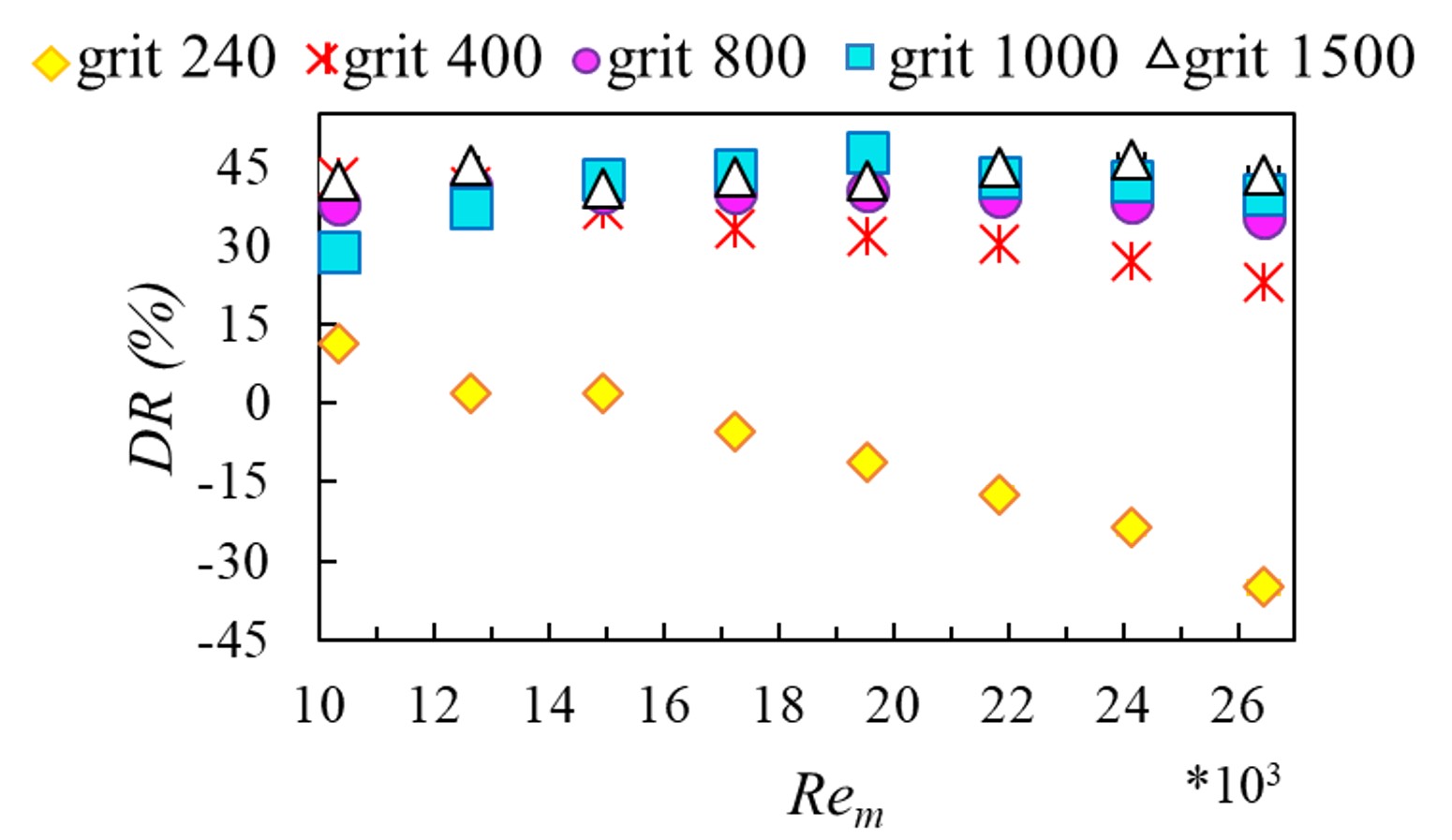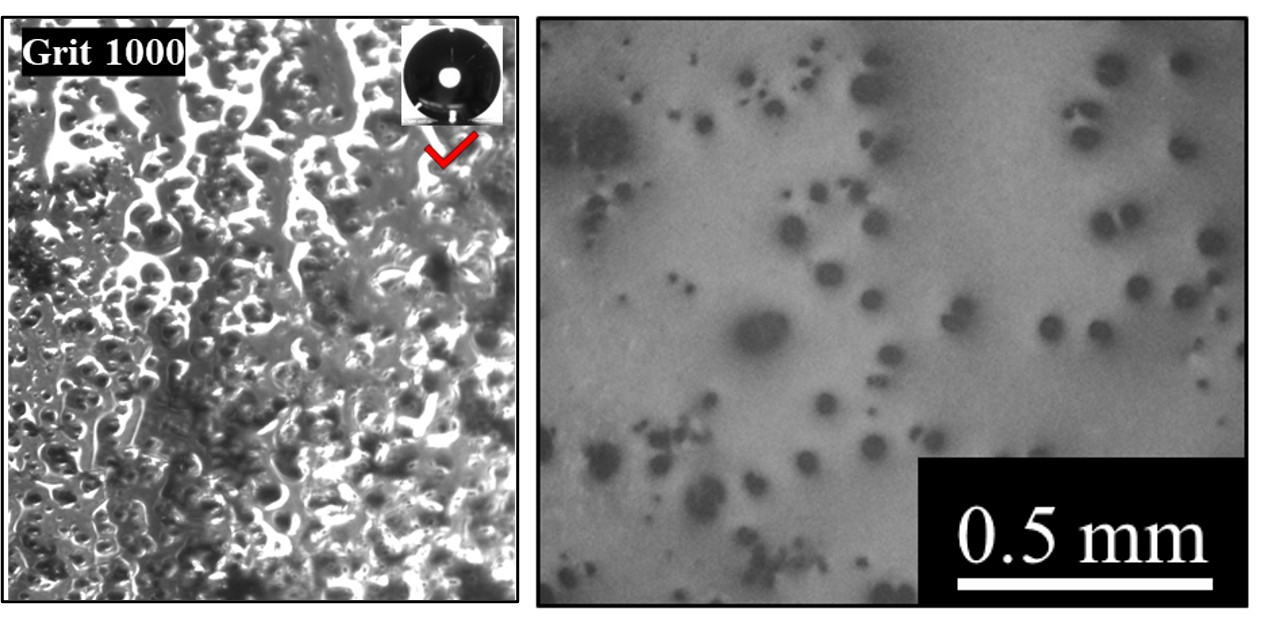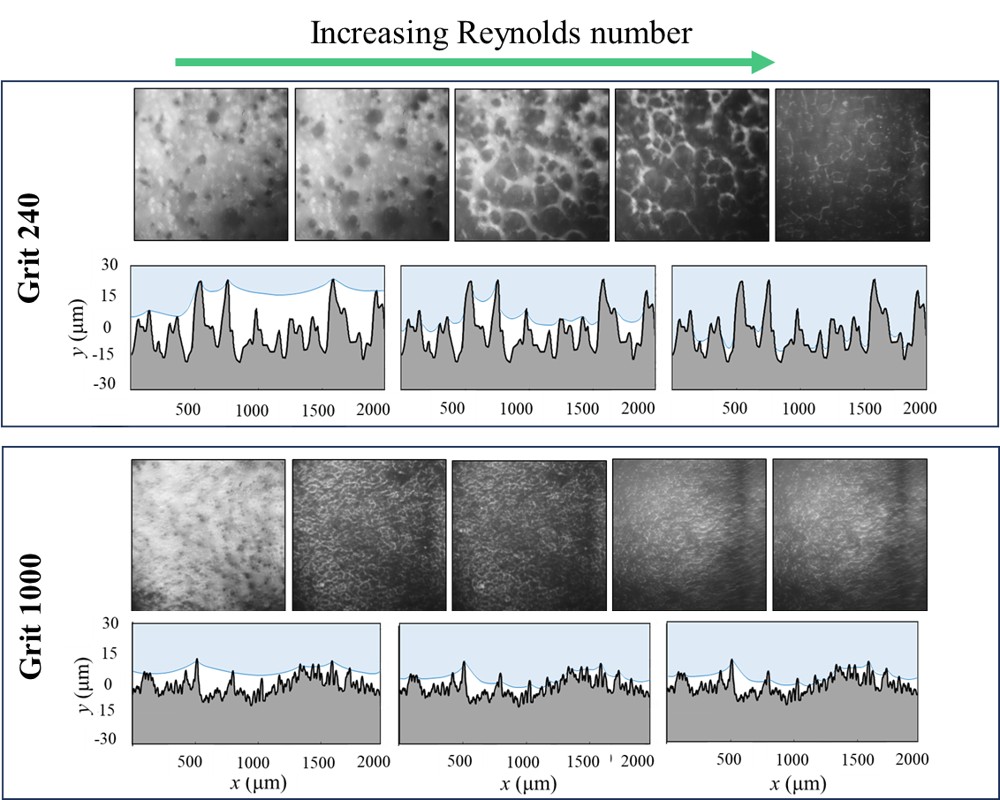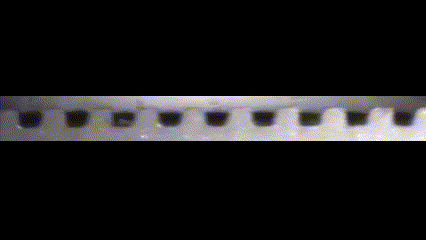Super-hydrophobic surfaces were initially inspired by the unique water-repellent characteristics of the lotus leaf.
When contacting with water, super-hydrophobic surfaces trap a layer of air bubbles (or plastron) between the surface texture, forming the so-called Cassie-Baxter state.

This project focuses on reducing skin friction drag through the development of passive methods using bio-inspired micro/nano structural surfaces by employing advanced micro/nano fabrication techniques.
Our objective is to build on our understanding of wetting transition of hierarchical bio-inspired materials. We introduced superhydrophobic surfaces with large water contact angles and a small sliding angles were fabricated by spray coating of silica nano particles over sandpapers with different grit sizes. Optical setup is developed, and surface properties are studied by Scanning electron microscopy as well as a surface profiler.

To visualize the plastron while the SHS was subjected to turbulent flows, Total Internal Reflection and Reflected Light Microscopy techniques were developed..
Silvery patches, that could be seen even with the naked eye, showed the surface was covered by an air layer.
Under turbulent flow, gas fraction was reduced due to the shear flow. In addition, the surface roughness greatly influenced the trend of plastron depletion in turbulent flows.
We found that the drag reducing property of superhydrophobic surfaces depends on the roughness height.



SHS were also fabricated by spraying nano particles over regular micro-scale textures fabricated by a MSLA 3D printer.
We showed that under the turbulent flow, SHS experienced a sudden transition from the Cassie-Baxter state to the Wenzel state, and no metastable state observed.
Rem = 7,000
g = 600 µm
H = 200 µm
